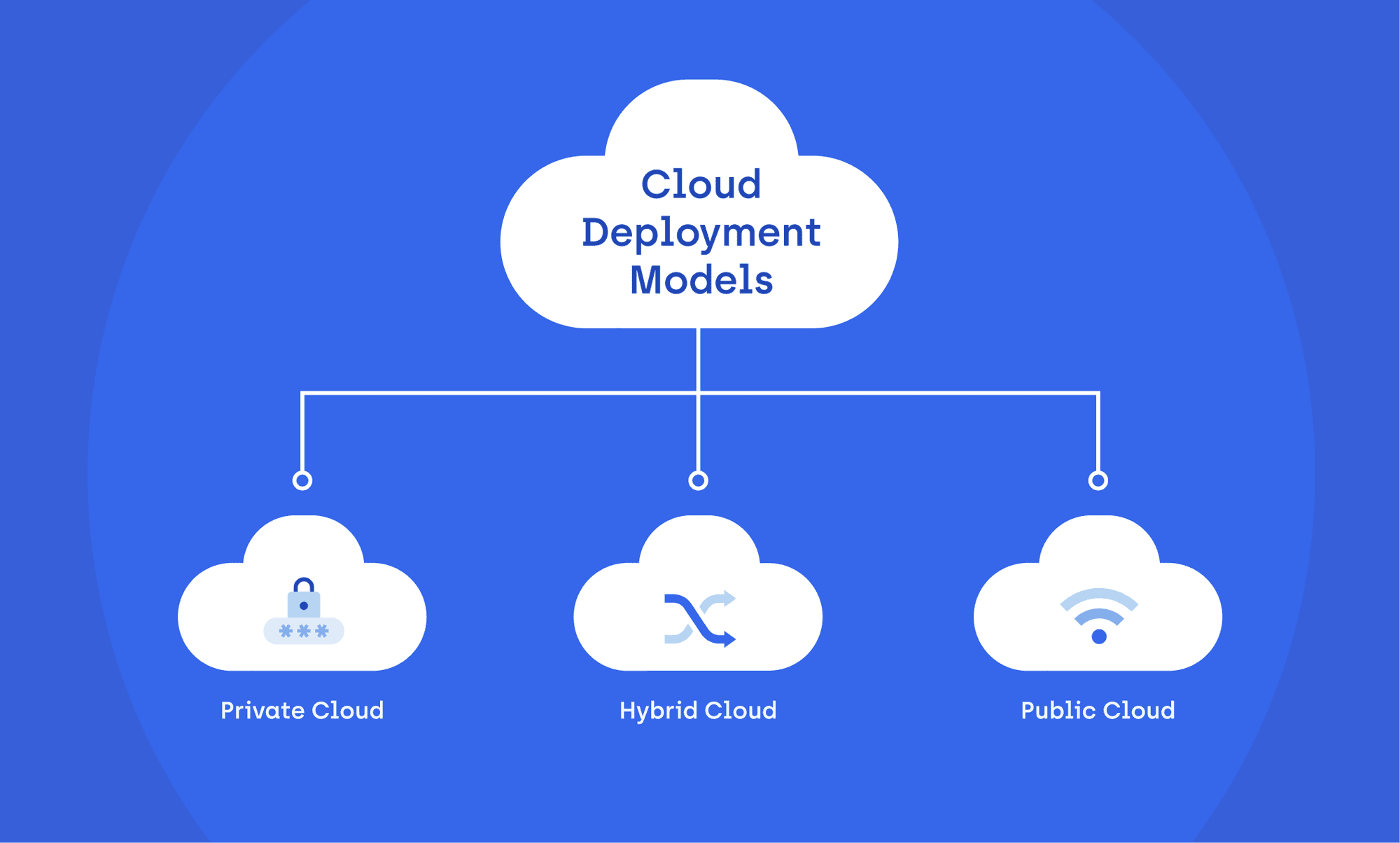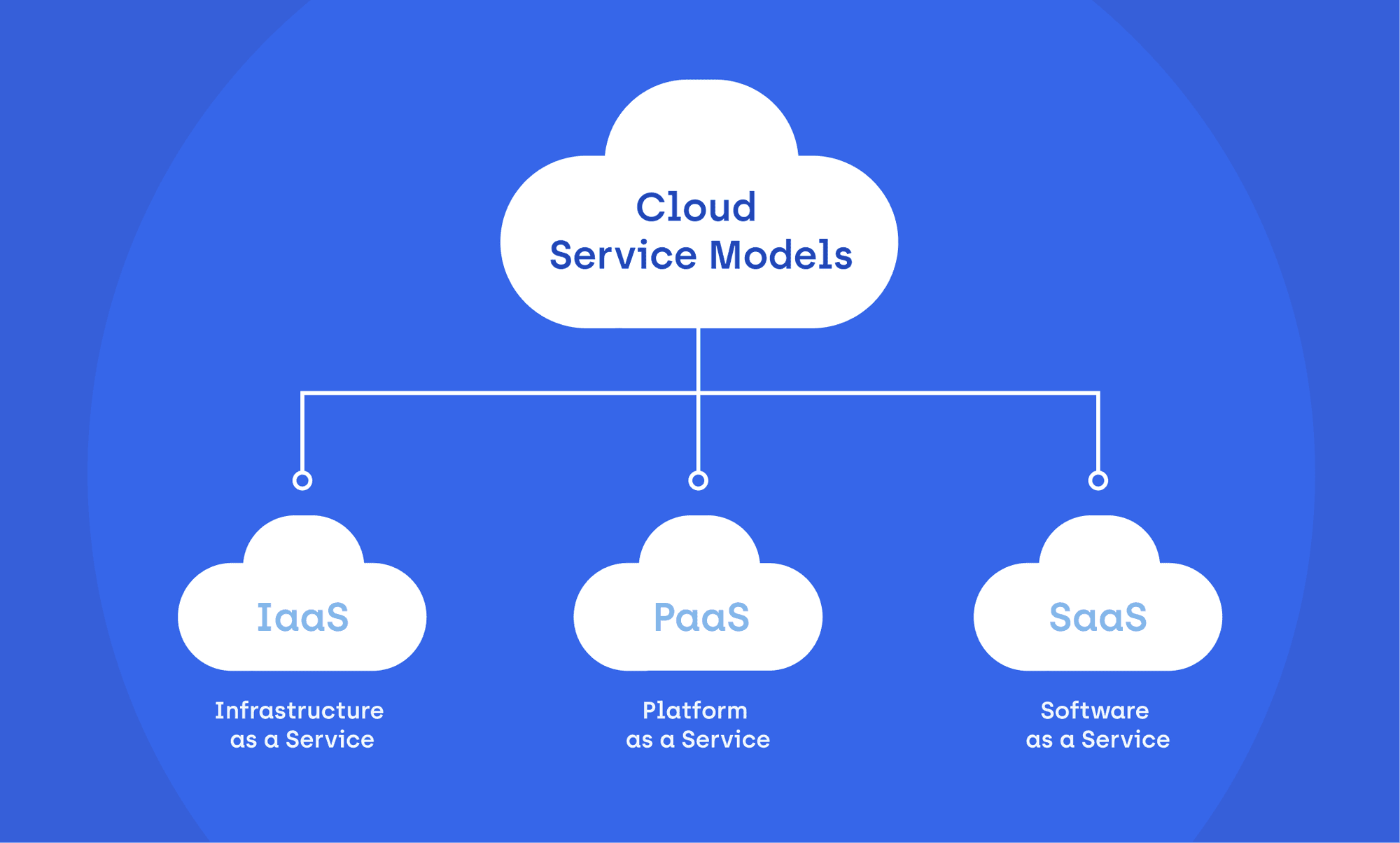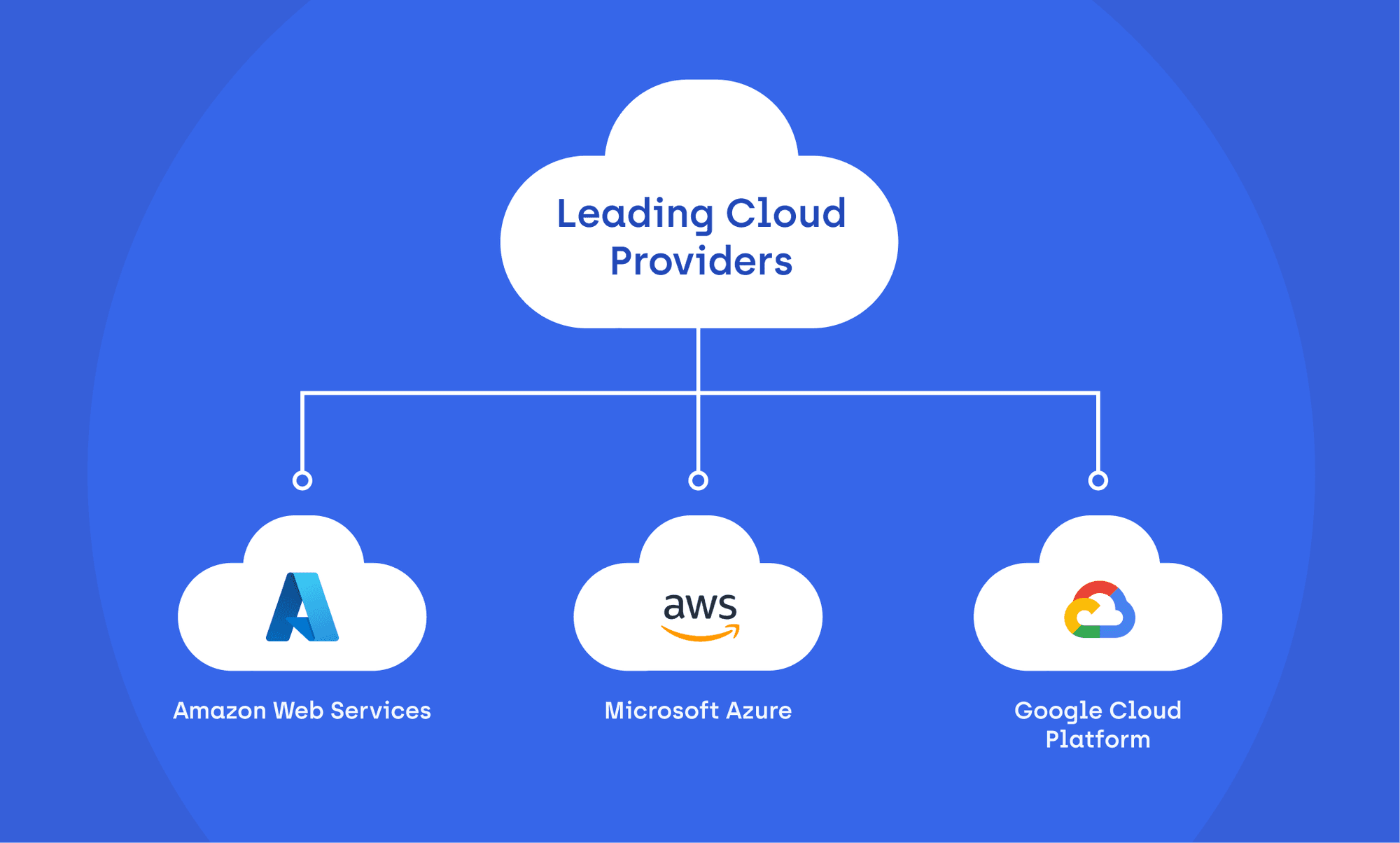10 Key Cloud Computing Benefits for Your Business
Anna Rózga

Cloud computing has become a fundamental technology for both companies and individuals, providing unmatched scalability, flexibility, and cost-effectiveness compared to traditional on-premises solutions. In 2024, it's no longer just a technical novelty; it's a necessity for staying competitive in the ever-changing business landscape. Let's explore the 10 key benefits that make cloud computing a game-changer for organizations of all sizes.
The Rise of Cloud Computing Services
In recent years, the global cloud computing market has steadily grown and is projected to increase considerably between 2023 and 2030, according to the latest data. The rise of cloud computing has made cloud adoption commonplace rather than a considerable competitive advantage.
In 2023, 94% of leaders use cloud computing services for their technology initiatives.
70% of organizations report more than half of their infrastructure exists in the cloud.
And 49% say they’re actively moving more of their data to the cloud.
If you're reading about the benefits of cloud computing, you're likely preparing for the cloud transformation of your business. Don't worry, we've got you covered! In this article, you'll learn:
- Common technical terms related to cloud computing.
- Key benefits of switching to the cloud from traditional on-premises infrastructure.
- Interesting facts and statistics from the world of cloud.
What Is Cloud Computing?
Essentially, cloud computing is a technology that involves accessing and utilizing computing resources without the need for on-premises infrastructure. Instead of owning and maintaining physical servers or hardware that require regular management, repairs, and updates, businesses can delegate these responsibilities to a third-party vendor. In this hosting model, your data is stored, accessed, and managed using a network of remote servers hosted on the internet. While the physical hardware is owned by cloud service providers like AWS, Azure, or GCP, you can purchase data space or computing power, unlocking the robust possibilities of cloud computing.
Now, let's delve into the key characteristics of cloud computing using three sets of categorizations: deployment models, service models, and leading providers.
The 3 Cloud Deployment Models
Cloud deployment models define how cloud services are hosted and made available to users. These are:
- Private Cloud: Infrastructure and services are dedicated to internal user, meaning a single organization and its members. Therefore, you'll need physical servers to run a private cloud, which can be managed by external providers or the organization itself.
- Public Cloud: Services are provided by third-party vendors and made available to external users, so if you're building a digital product for customers, that's the way to go. Public cloud requires less of a financial investment as physical infrastructure isn't necessary.
- Hybrid Cloud: Combines elements of both public and private clouds, allowing businesses to leverage the advantages of both. In this model, data and applications can seamlessly move between private and public environments.

The 3 Cloud Service Models
Cloud computing is typically categorized into 3 service models, which provide varying levels of control over the infrastructure and management responsibilities. Here's a brief explanation of each:
- Infrastructure as a Service (IaaS): Provides virtualized computing resources over the internet. Users can rent virtual machines, storage, and networking components, which grants them more control over the operating system and configurations.
- Platform as a Service (PaaS): Offers a platform and tools for application development and deployment. This model allows developers to focus on coding rather than managing the underlying infrastructure.
- Software as a Service (SaaS): Delivers software applications over the internet on a subscription basis. As the software is hosted and maintained by a third party, SaaS eliminates the need for users to install, manage, or update software – a perfect match for productivity tools, collaboration apps and customer relationship management.

The 3 Leading Cloud Service Providers
- Amazon Web Services (AWS): With 32% total cloud service market share, AWS is the world’s top cloud platform, offering over 200 services, a mature environment for big data, and robust DevOps support.
- Microsoft Azure: Backed by Microsoft's decades of experience in enterprise technology, Azure is known for its strong integration with the company's existing products and services and is praised for more hybrid cloud infrastructure possibilities compared to AWS.
- Google Cloud Platform (GCP): Recognized for strength in data analytics and machine learning, GCP offers a suite of cloud computing services, including computing, storage, data analytics, and more.

As this brief overview demonstrates, the possibilities within cloud-based services are truly robust. So without further ado, let's explore 10 key benefits of cloud computing that can make your business more agile, cost-effective, and technologically advanced compared to competitors relying on traditional on-premises infrastructure.
1. Cost Savings
For many companies, the ultimate concern is cost, making it the most compelling argument for embracing cloud computing. Investing in physical servers entails a dreadful upfront expense. Even if you possess the hardware, you should be prepared for ongoing maintenance costs and on-premises storage expenses that just keep adding up.
On the flip side, opting for cloud computing services eliminates upfront infrastructure expenses and allows payment only for the actual usage of computing resources. This pay-as-you-go pricing model, embraced by major cloud providers like AWS, Azure, and GCP, leads to substantial cost savings and more predictable budgeting. In simple terms, cloud transformation of your business is not an expense but an investment.
71% of leaders say their cloud budgets will increase over the next 12 months. And that’s not all; 74% of leaders also expect their cloud skill development budgets to increase.
2. Scalability
Speaking of the pay-as-you-go model, it aligns perfectly with the scalable nature of cloud infrastructure. Scalability refers to the ability to adapt to changing demands without compromising performance, responsiveness, or reliability. A prominent feature of cloud computing is that it can be easily scaled up or down based on business needs to accommodate varying workloads without the need for major hardware investments.
There are many ways of achieving high scalability, one of which is auto-scaling. This feature automatically adjusts computing resources in a cloud environment based on demand. Additionally, cloud providers offer load balancing services that distribute incoming traffic across multiple servers with great efficiency, especially when combined with microservice-based architecture.
Microservices: An architectural style where applications consist of multiple small, independent services that communicate with each other through APIs.
3. Accessibility
While accessibility may seem like a common expectation today, it remains a noteworthy benefit. Cloud computing enables global access to data as long as there's an internet connection, empowering companies worldwide to improve productivity rates and streamline workflows. With data centers from leading cloud providers spread worldwide, accessing applications is faster than ever before.
What's more, your cloud provider of choice commits to a specific level of cloud availability (e.g., 99% of the time) in the contract. The SLA (Service Level Agreement) precisely outlines the agreed-upon levels of service, including availability and other performance metrics and responsibilities.

4. Security
While on the subject of accessing data with ease, you wouldn't want your precious corporate data to fall into the wrong hands, right? Unfortunately, some companies are under the impression that on-premises solutions surpass cloud-based services in terms of data security. In reality, cloud provider giants invest heavily in robust security measures, surpassing innumerably what a regular business could afford. Through access control, encryption, and regular updates to address emerging security risks, they protect sensitive data on cloud servers.
Cloud leaders identified security as their top skills gap in 2023, and 79% of them are building (or have built) cloud security policies and procedures.
5. Business Continuity
Robust security measures aren't the only way of keeping your data safe in a cloud storage, as cloud services typically include automated backup and built-in disaster recovery solutions. To be fair, while unforeseen disasters can impact both cloud and on-premises servers, the resilience of each solution differs.
Cloud platforms distribute and duplicate your data across multiple data centers in various locations. This means that in case of unexpected events, operations can seamlessly shift to another data center to prevent data loss, minimize downtime, and ensure business continuity. Achieving comparable resilience with on-premises servers would require time and resource-consuming investments in backup and recovery systems, making them the more vulnerable option between the two.
Resilience: The ability of an object or system to adapt to changing conditions and recover quickly in the face of disruptions or adversity.
6. Resource Consolidation
Efficient resource consolidation stands out as a key benefit of cloud computing. This involves optimally utilizing computing resources by combining various workloads on shared infrastructure with the aim of reducing waste and enhancing overall efficiency. This consolidation can be achieved through various techniques such as virtualization and tools such as Kubernetes. The result? Multiple applications or tasks running simultaneously while maintaining high performance and low operational costs.
Virtualization: Creating virtual instances of computing resources (virtual machines or containers) on a single physical server.
Kubernetes: An open-source container orchestration platform that provides on-demand scaling functions to match changing workload requirements.
7. Data Analytics and Insights
On the topic of optimization, did you know that cloud computing empowers companies to leverage advanced data analytics to improve their business processes? Virtually every cloud service provider offers data integration services for their clients, enabling the consolidation of data from various sources. By utilizing real-time data analytics tools and machine learning, you can extract valuable insights from large datasets. Equipped with this knowledge, you can make informed, data-driven decisions and optimize the way your business operates.

8. Automatic Updates
Staying current with the latest technologies is crucial in today's competitive landscape, and cloud service providers understand this well. Most providers offer automatic software updates in the PaaS and SaaS models, including security patches and server maintenance. This approach ensures businesses use the latest and most secure technologies without the need for manual intervention in the underlying infrastructure. What's more, major players in the field stay ahead of the curve, keeping up with technology trends such as artificial intelligence, hybrid and multi-cloud, and serverless cloud computing.
44% of organizations adopt the latest cloud products as soon as they’re available.
9. Innovation Acceleration
Cloud-based platforms drive business innovation in several ways. Seamless scalability, robust security measures, and automatic updates empower organizations to explore new ideas, shifting focus from infrastructure management. This creates a perfect environment for effective collaboration and experimentation, which fosters rapid development of new digital products.
Furthermore, cloud computing is known to accelerate the innovation cycle by reducing the time to deploy new apps and services. Once a cutting-edge product gains traction locally, expanding globally becomes more accessible than ever without the need for physical infrastructure in multiple locations.
51% of leaders say they’re investing in cloud technology to develop new ideas, approaches, and methodologies.
10. Environmental Impact
The final, 10th benefit is the environmental friendliness of cloud computing compared to traditional on-premises infrastructure. The main reason behind this is that cloud systems compute and store data more efficiently, reducing energy consumption, water usage, carbon emissions, and electronic waste.
Moving away from on-premises computing to cloud computing may prevent the emission of more than 1 billion metric tons of carbon dioxide from 2021 through 2024, in part due to the greater efficiency of aggregated computing resources, according to research firm IDC.
However, it's crucial to note that the environmental impact of the cloud computing sector is far from being sustainable. Current data indicates that this industry contributes to 3% to 4% of global emissions annually, with projections doubling by 2025. Nevertheless, many leading cloud providers have pledged to reduce their environmental impact. For instance, AWS committed to 100% renewable energy by 2025, water positivity by 2030, and achieving net-zero carbon by 2040.

In conclusion
If the significant advantages of cloud computing over on-premises infrastructure presented in this article resonate with you, it's time to transition from words to action. As an experienced software agency, we understand the challenges of cloud transformation for businesses of all sizes. Contact us today, and we'll be happy to discuss your vision!
Stay tuned for more articles on the topic of cloud coming soon.
Need expert assistance with your digital project?

